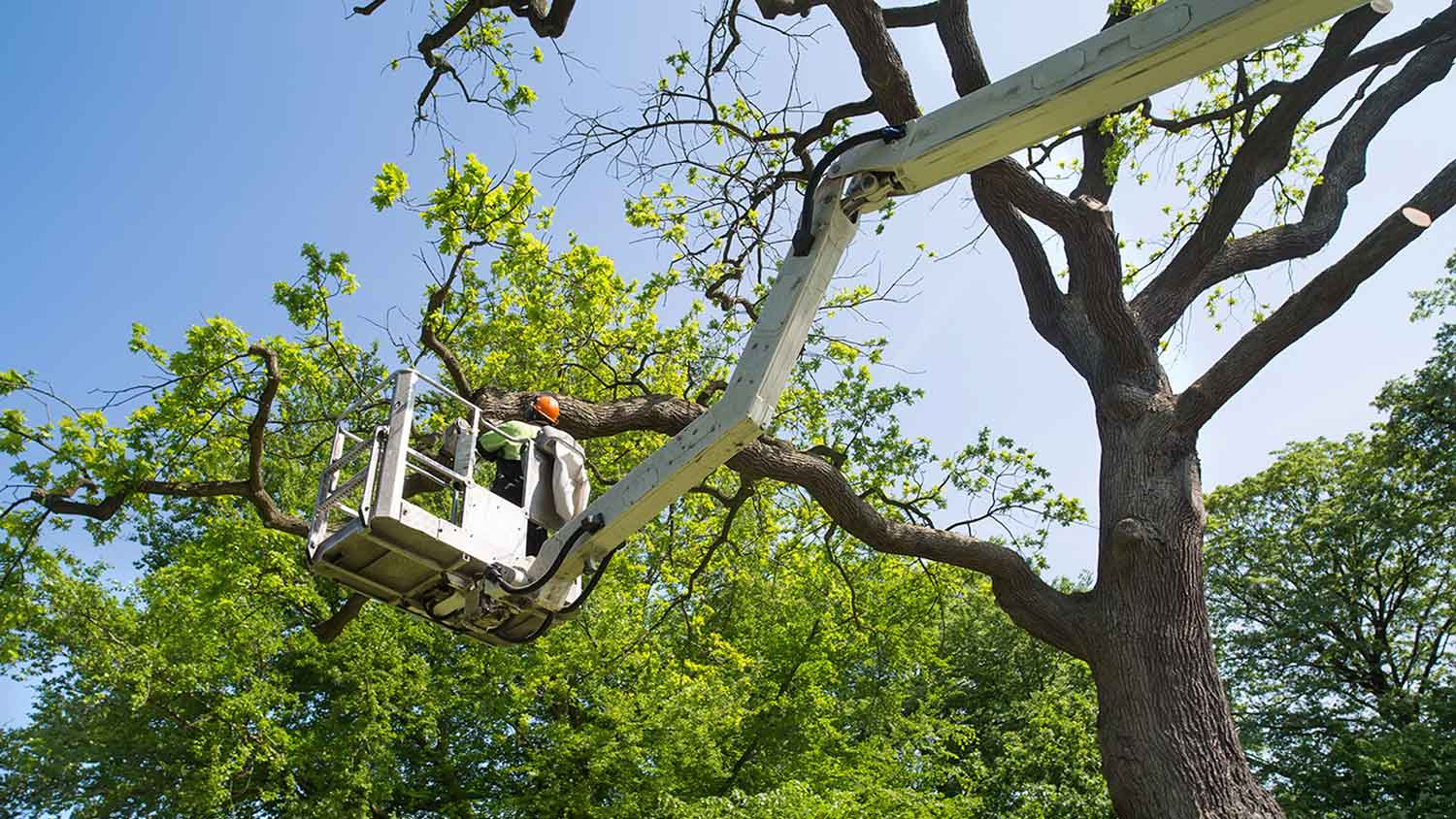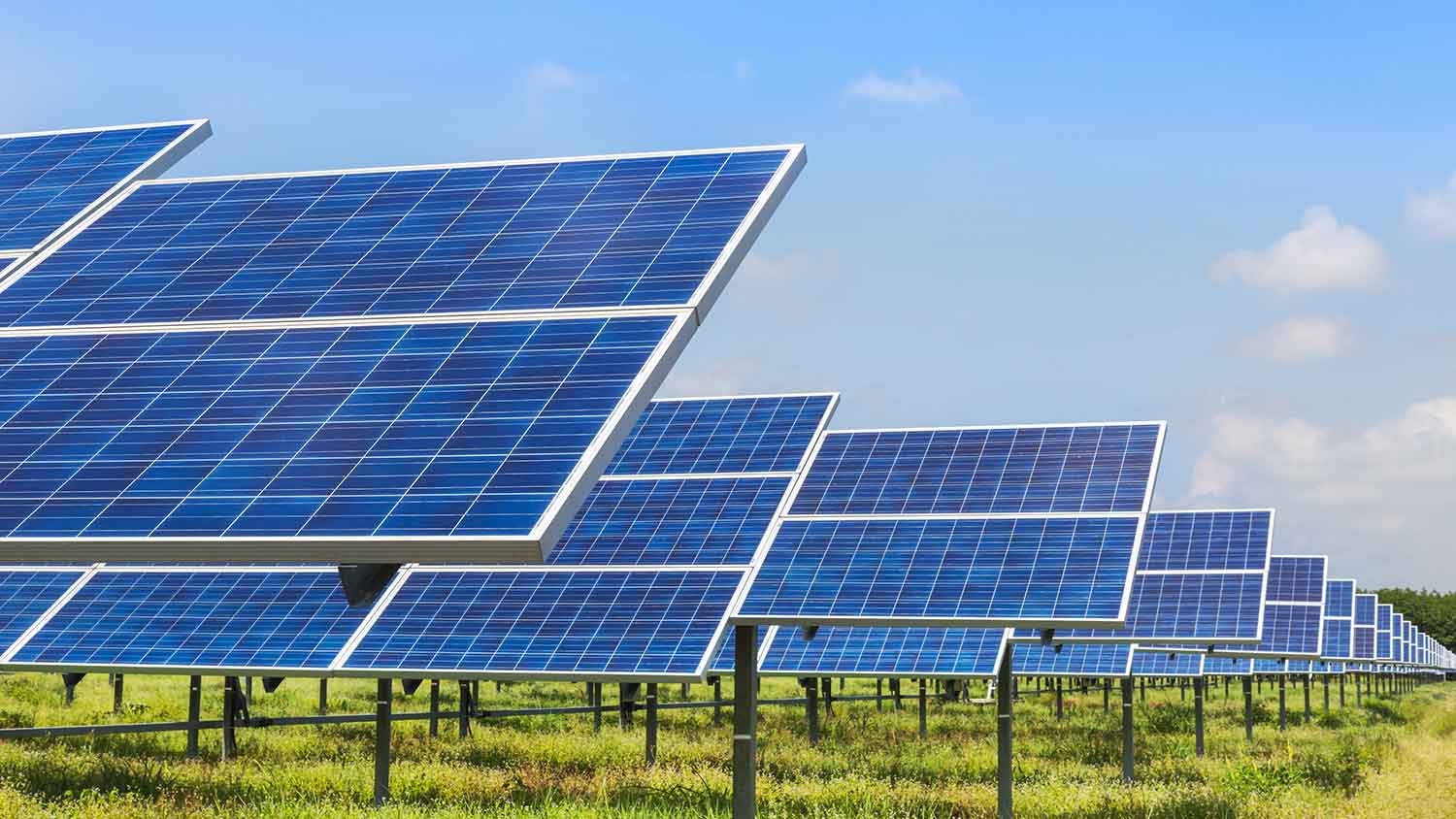
The cost of tree stump removal depends on size, removal method, location, and more. Our guide will show you how much stump removal costs.
To get maximum sunlight for your solar panels, you may have to say goodbye to some trees


Trimming rather than cutting down trees is often enough to allow enough sun for solar panels.
Long-term solar panel use reduces CO2 emissions considerably more than one tree absorbs it.
Trees in your yard offer other benefits that might mean you don’t want to remove them.
There are many reasons to think twice before cutting down trees in your yard, with one of the major motivators being their environmental benefits. But what about if they’re blocking the light for renewable energy solar panels?
Calculating the estimated carbon offset of your solar panels can help you decide if taking away a tree or two is a worthwhile tradeoff. Read on to understand what to consider when deciding if removing trees for solar panels is the way to go.
Even if you install your solar panels up high on your roof, if you have some towering trees, they may block the sunlight from getting to your solar panels. Ideally, your solar panels will have at least four hours of direct sunlight per day to work properly. So, if your trees provide constant shade, or even shade for a good bit of the day, exploring a solution to reduce those shadows is usually a good idea. Typically, a pro will make this recommendation before installing your solar panels so you have the best plan for success.
However, you may have a few different options and factors to consider before opting for total tree removal.

Luckily, you won’t always have the dilemma of whether to make any tree sacrifices for a solar panel system. Smaller species and trees far enough away from your home won’t reduce roof shade. Other times, it’s enough to hire a local tree trimming professional to cut back some branches to let in the light. Much depends on the direction of the sun and the amount of shade throughout the year.
If you’re unsure, arranging a professional solar panel site assessment will give you a better idea of whether your yard trees will be troublesome.
When calculating if removing trees for solar panels is the way to go, it’s important to recognize that any environmental impact calculations are rough estimates. However, the numbers typically suggest that cutting down a tree or two will be worth it environmentally if the solar panels are well-utilized in the long term.
One mature tree can absorb over 48 pounds of carbon dioxide from the atmosphere in a year, according to the Arbor Day Foundation.
Statistics from the U.S. Energy Information Administration report that the average annual electricity consumption for a U.S. residential utility customer is 10,632 kilowatt hours (KWh). They consider electricity generation from solar panels to be carbon neutral. When it’s generated from coal, natural gas, or petroleum, electricity produces between 0.97 and 2.44 pounds of CO2 per kWh. That means CO2 emissions from an average household range from around 10,000 to 26,000 pounds.
Cutting down a tree or two that absorbs 48 pounds of carbon dioxide a year seems a more than fair compromise for the amount of CO2 emissions your solar panels will prevent.
It’s not just the greenhouse gas emissions you need to consider when deciding whether removing trees for solar panels is the way to go. You’ll need to think about how important the other ways trees benefit the planet and your home are to you.
Trees provide clean air: The U.S. Department of Agriculture estimates one mature tree provides enough oxygen for four people per day.
They can also help with energy savings: You can still lower your energy bills without solar panels with strategically placed shade trees. They help keep your home warmer in winter and cooler in summer.
They make important wildlife havens: Trees provide shelter and food for many bird and animal species.
They help prevent soil erosion and improve drainage: Roots soak up excess water, and canopies help reduce erosion.
They can raise resale prices: The right trees can add to your property value and general curb appeal.
The average upfront cost to remove a tree from your yard is $750, although it won’t take long to recoup this cost with long-term solar panel savings. In fact, you can typically expect to save $650 to $1,500 per year on your bills thanks to your solar panels. Plus, available solar tax credits often include tree removal costs.
When making financial calculations, you’ll want to consider the cost to install solar panels in the first place. However, you’re likely already aware of the estimated bill if you’re considering removing trees to make way for solar panels.

You can still tap into the benefits of solar energy without having to install them on your roof and chop down a treasured tree in the process. While not available in every state, there are a growing number of community solar initiatives promoting clean energy and helping you save on your energy bills.
In the case of a community solar initiative, also called a solar farm, you and other community members share the output from a larger solar installation. This solar energy wouldn’t power your home directly, but you would help put clean solar energy into the power grid for local utilities. If you subscribe to a solar farm, you would then get credits towards your utilities, saving money in the process.
The details of the community solar projects differ by state and individual project. Do your research if any are available near you to learn more about the benefits and processes involved.
If you’ve opted to have a certified local professional install solar panels on your roof, and it’s resulted in you losing one of your trees, why not plant another one in a more suitable area of your yard? Just make sure you pick the right location so you don’t end up with the same shade-making problems further down the line.
From average costs to expert advice, get all the answers you need to get your job done.

The cost of tree stump removal depends on size, removal method, location, and more. Our guide will show you how much stump removal costs.

Discover the average tree maintenance cost, key price factors, and tips to save. Get expert insights to plan your tree care budget with confidence.

Discover what the current average tree removal cost is based on different factors to know how much it will cost to take care of a dead or troublesome tree on your property.

Learn what the tree removal process entails and find out what qualities to look for in professional tree removal services in this guide

Wondering who to hire to plant trees? Learn everything you need to know about the hiring process for professional tree planting in this informative guide.

Transplanting large trees is typically the work of professional tree movers and arborists. However, you can move small existing trees as a DIY project.